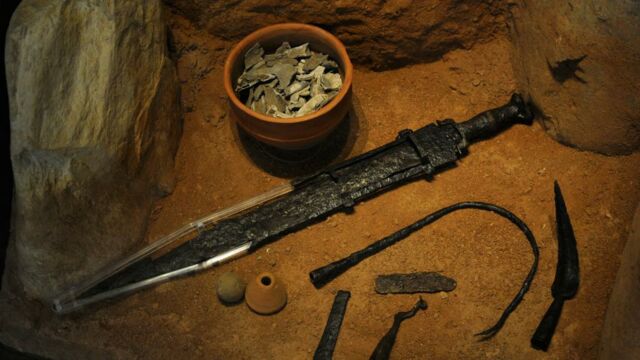Researcher shocked to find out the truth behind this 3000-year-old sword from Bronze Age

After analysis, an ancient sword discovered in 1930 has been certified as the original! Archaeologists thought it was a replica from the medieval period.
It is not the legendary Excalibur, but this sword is still worth a look! Unearthed on the banks of the Danube near Budapest, the sword was found in 1930. But contrary to what researchers thought, this one is not a replica, the weapon is indeed the original dating from the Bronze Age.
Discover our latest podcast
The first swords in history
In the long history of weapon making, the Bronze Age is distinguished by the appearance of the first swords. These were made possible by the performance of bronze. Bronze was both stronger and more malleable than stone, which had previously been used to make weapons in the Neolithic period.
More under this adMore under this adMen used the performance of several metals that they mixed together. To do this, they melted an alloy of copper and tin which they cast in a mould to give it the desired shape. Iron ore would then gradually replace bronze, which was less resistant, for the manufacture of tools and weapons.
More under this adMore under this adNot a replica
There is still more to the story. The sword, discovered in Hungary, has been on display for nearly a century at the Field Museum in Chicago. But where we thought the ancient weapon was a replica from medieval times, recent research has shown it to be an original!
It was a Hungarian archaeologist who made the discovery! While visiting Illinois, the researcher went to the museum that was organising an exhibition on the ancient kings of Europe. He leaned over the sword and said, 'This is not a replica,' William Parkinson, curator of anthropology at the American museum, told a local television station.
More under this adMore under this adX-ray of the sword
Wanting to corroborate these statements, Parkinson x-rayed the sword to verify what metals the weapon was made of, now shrouded in mystery. Our archaeologist was indeed right, the chemical composition matches in every way. He said in a recent museum press release:
Usually this story goes the other way... What we think is an original turns out to be a fake.More under this adMore under this ad
Enlightened by this discovery, we now know that the sword was thrown into the Danube sometime between 1080 and 900 BC, probably as part of a ritual. Anthropologists assume that the ceremony commemorated a battle or the death of the bearer of the weapon in question.
This article was translated from Gentside FR.
Sources used:
-ScienceAlert: Sword Mistaken For Replica Is Actually An Ancient 3,000-Year-Old Weapon
-Grand Palais : qu’est ce qu’une épée et plus ?